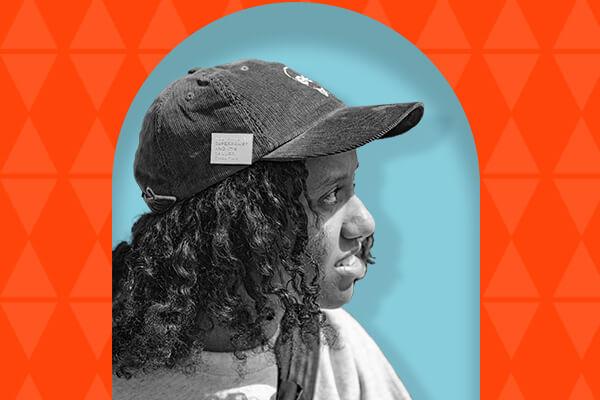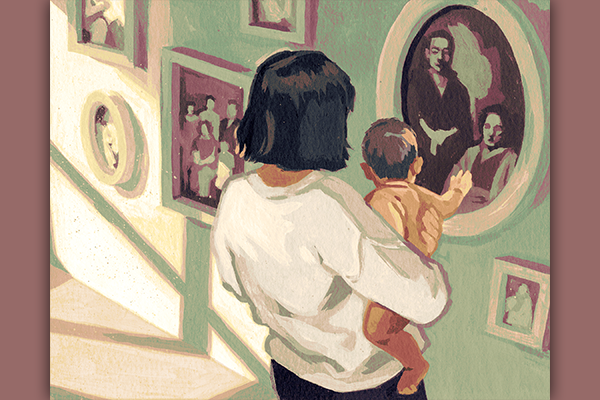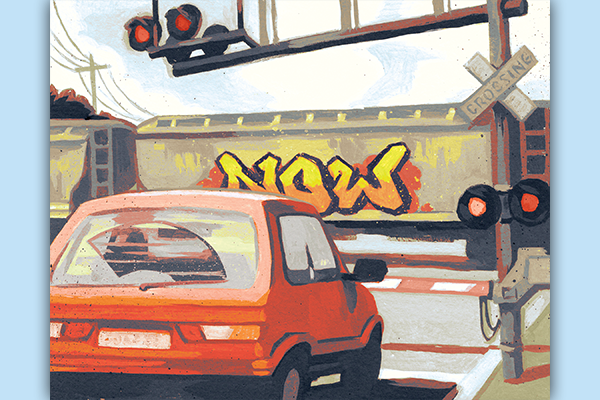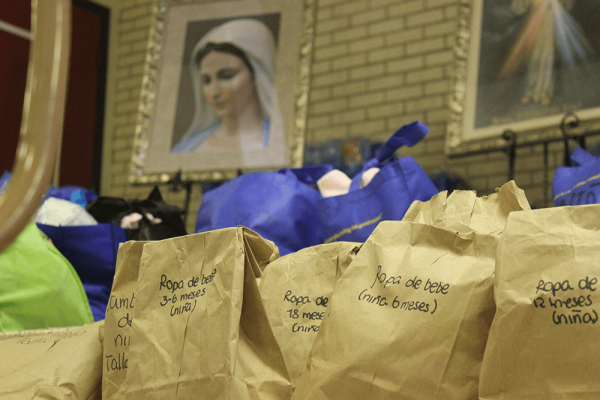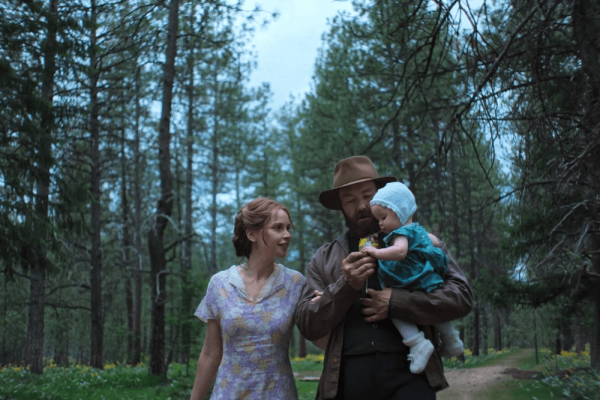For the July issue of Sojourners, freelance artist Blane Asrat illustrated portrait painter Kehinde Wiley. She spoke with editorial assistant Liz Bierly about why she’s a portrait painter, the physical connection to her work, and what she hopes viewers will take away from her art. You can find her illustration of Wiley in the July issue and see more of her work at artblane.work.
This interview has been edited for length and clarity.
Liz Bierly, Sojourners: On your website, you say that you “seek to explore the sensitivity of everyday human experiences while making the world a more empathetic place.” What does that look like?
Blane Asrat: I am primarily a portrait painter because I am interested in human emotions. Growing up, I was always told that I was too sensitive and too reactionary. All teenagers kind of go through that phase of being extra emotional, but I feel like for me, it started way too early and never really ended. I’ve always just been a sensitive person, and I’ve been in these situations where I am in conversations or social settings where no one really knows how to deal with that. It’s uncomfortable and it’s awkward because we don’t know how to be emotional with each other.
And so, my artwork is all pretty internally motivated. It’s usually about what I’m feeling, or how my friends are feeling, or what I’m feeling other people are feeling. My goal with my artwork is really just to answer the question: What would this feeling look like if I could see it? And I have this hope that if more people could have time to pause and really ask themselves those questions, it will just lead to a world where people are more comfortable with their emotions.
Is there a piece of art you’ve created recently that stuck with you?
There’s this piece on my portfolio under the digital illustration section and it’s called “Zero.” It’s sort of a triptych with the same face in each panel but the face is getting distorted. That one is pretty meaningful to me right now because it’s the only personal piece I’ve gotten to create this year that wasn’t for a gallery or a client or a magazine or anything.
The meaning of that painting is kind of about self-esteem and feeling like you’re nothing. On the side of it, it says, “Who do you think you are?” And then there’s “zero” [written] on the top, but you have to remember that it’s superficial … part of it is getting distorted as it goes on, but there’s still part of it that remains recognizable. For me, it was this idea of remembering, even though you feel like you’re getting lost in your work and your self-worth, to stay still—and trying to still be strong through that.
What is the most impactful piece of feedback you’ve gotten on the art you create?
There was one time where I got an Instagram message from a woman who had purchased one of my comics. She sent me this really long voice message and she kept saying, “Bless your hands, bless your hands.” And that one is going to stick with me for a while because it’s one thing when somebody tells you your work is good, but the physical connection that she made with my hands, that was really impactful for me. Sometimes as an artist you get disconnected a little bit and the work is just the work, and you get lost. But the fact that she mentioned the actual body part that made the work, that really kind of brought me back to myself.
What do you hope people feel when they come away from your art?
I paint a lot of Black and brown people in very soft and sensitive ways, especially Black men. And I do have this hope—although it’s not my main driving force with my art –that people will come away from my art thinking that, yes, Black people can be sensitive and emotional too … Black people can be vulnerable, and they’re not just superheroes that are just tough and they can just take on the world.
I do, in general, just want people to be able to come away with this feeling of like, “Okay, I’ve paused, and I’ve reflected on my feelings, and I’m more comfortable with my emotions around whatever emotion I’m expressing in that piece.”
Is there an assumption that people might make about you or your art that you’d like to challenge?
I think that some of the interviews that I’ve had, most of them have been centered around me as a Black artist and as an activist. And I will say that, although I do care about activism, and I try my best to do nonprofit work and I do care about my community, I feel like sometimes there’s this misconception— because I’m a woman and I’m Black—that my art is just a vehicle for activism. I feel like I get pigeonholed or put in this box sometimes of being a Black activist artist, and I just want to be an artist sometimes.

Got something to say about what you're reading? We value your feedback!
